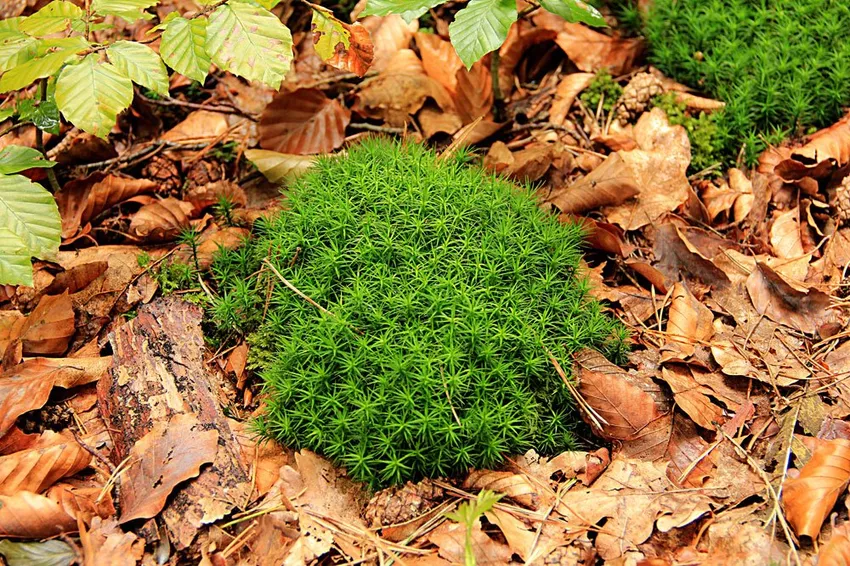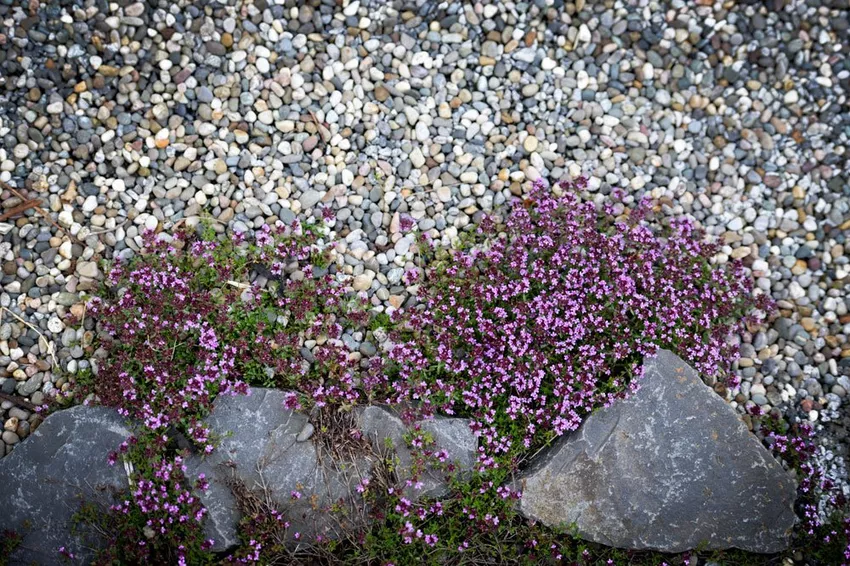If you have paved paths or a paved terrace, you have to constantly clean the joints. Take the stress out and plant the joints.

There is probably no more tiresome work than cleaning pavement joints. You think you've finally got everything ready and whoops, weeds are peeping through the joints again. Then the whole game starts again from the beginning. Get on your knees and scrape your joints. However, you can save yourself this tiresome work. As? By simply planting the joints. All you have to do is free the paving joints from the unwanted one last time and you can beautify them with sturdy, flat plants. The practical and visual result is definitely impressive!
Here we present herbs, mosses and low perennials that are ideal for greening the paving joints.
This is how paving joints are greened
❶ Preparation for the joint planting
First of all, the weeds have to be removed. This is the most strenuous part of the work, because plants with long, deep roots often grow between the paving joints and are difficult to remove. Simply pulling weeds often does not help. But there are tools and methods that will make your work easier:
❖ Tools with a spike, scraper or knife blade:
They are relatively easy to use. If you work while kneeling, you have more strength - however, the procedure is hard on the kneecaps and not very back-friendly. Therefore, put knee pads under them and take frequent breaks with stretching exercises.
❖ Electric grout cleaner:
Electric grout cleaners are convenient and efficient. However, the expensive device is only worthwhile for very large areas. Of course, you can also buy the device together with several neighbors. Alternatively, you can also ask in the professional area whether you can borrow a joint cleaner.
❖ Pressure washers and flame burners:
They work with water pressure or gas flames. Both reliably remove weeds. More on this on the high-pressure cleaner and weed burner pages.
❖Herbicide:
You probably already guessed it - the chemical club should remain the absolute exception.
❷ Fill joints with soil
After thorough cleaning, fill in the joints with sandy, well-drained, loose soil. The soil mixture is also available under the name roof garden soil. Sprinkle soil generously over the joints and sweep in.
❸ Green paving joints
So that the paving joints can be greened, they must not be too narrow. With a width of less than two centimetres, special seed mixtures containing herbs and hardy, small green plants are suitable. You can green wider joints with flat cushion perennials. To do this, water the root balls well before planting. If the root ball is too large, trim it with a smooth, sharp cut. Most small perennials are robust and tolerate pruning well.
➜ Suitable plants for paving joints:

Star moss is evergreen and covered with many tiny, white flowers in spring/summer. It is conditionally step-proof. Cat's paws, stonecrop and houseleek are just as permanently green. You can grow the plants mixed or stick to one variety - both look appealing. Just go with your taste and the garden style.

Sedum also feels at home in pavement joints. Most sedum species stay flat and are used to difficult conditions. Occasional stepping on does not bother the plants. However, they should not be stressed too much.

Also very nice and well suited for joints: prickly nuts and pennywort. The prickly nut looks prickly, but is completely harmless. Pennywort has small, round leaves in a fresh green.

Thyme is also very good in paving joints. Thyme is not only available as a taller herb, but also as a flat herb. For example, woolly (felty) thyme that only grows 3 - 5 cm high. With small, pink summer blooms, it's a pretty sight. For heavier use, for example in the garden with children, Roman chamomile and prunella are well suited.
❹ Care after planting
In the first few weeks after planting or sowing, you must water the joints regularly. After that, no maintenance is required other than the occasional pruning.